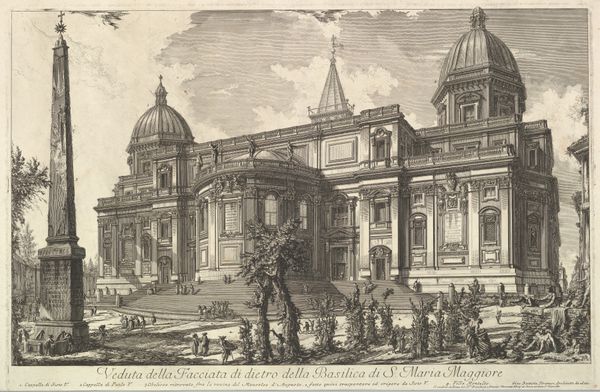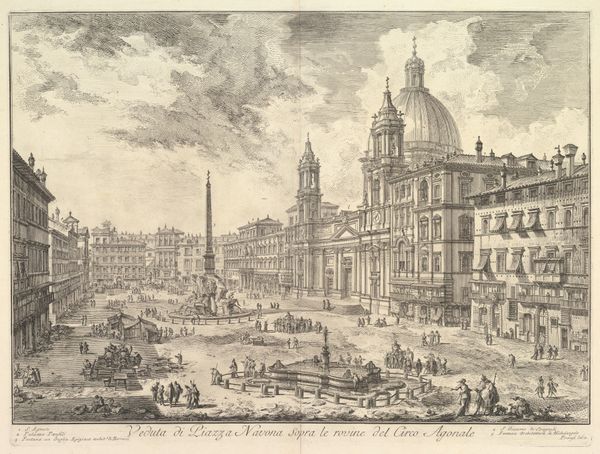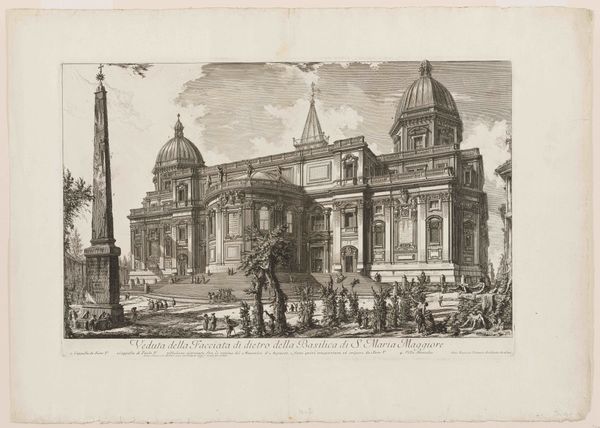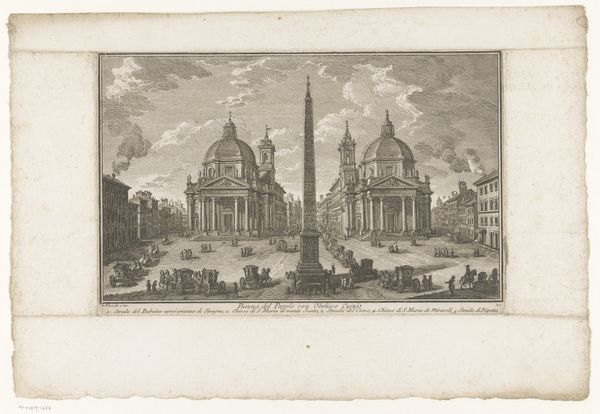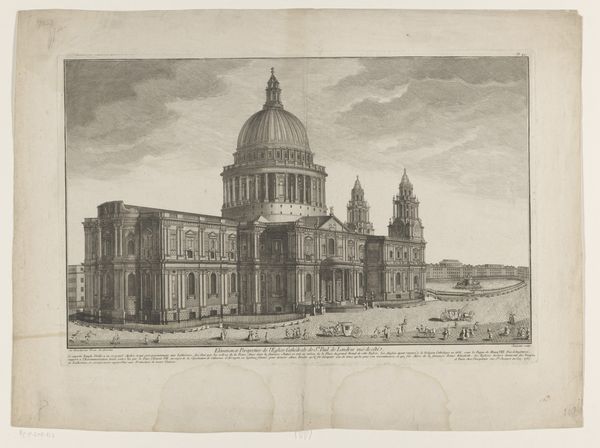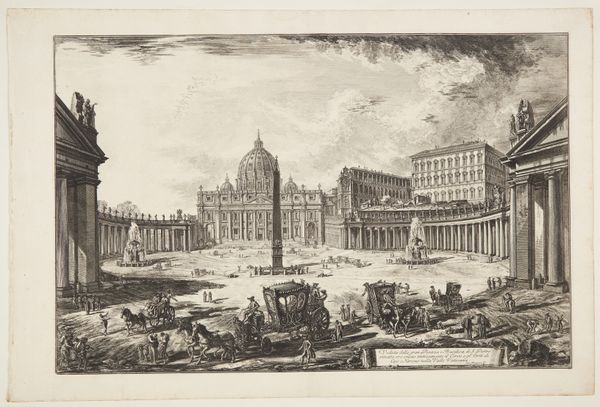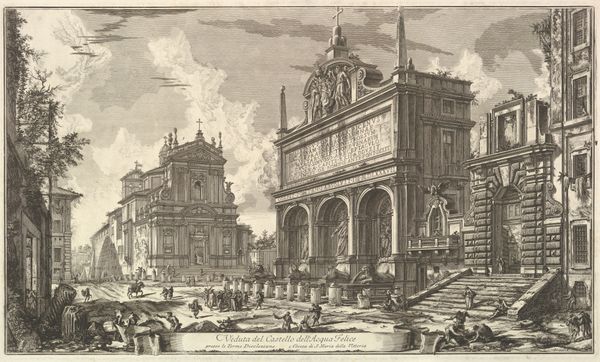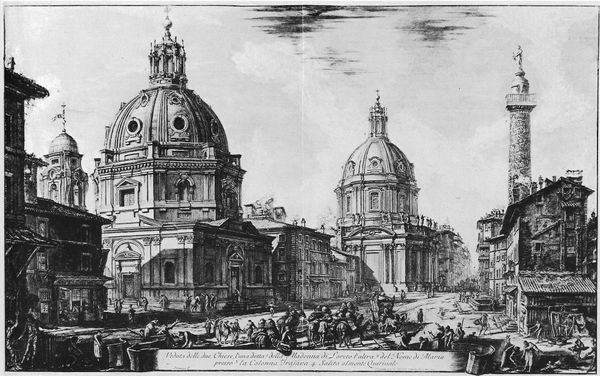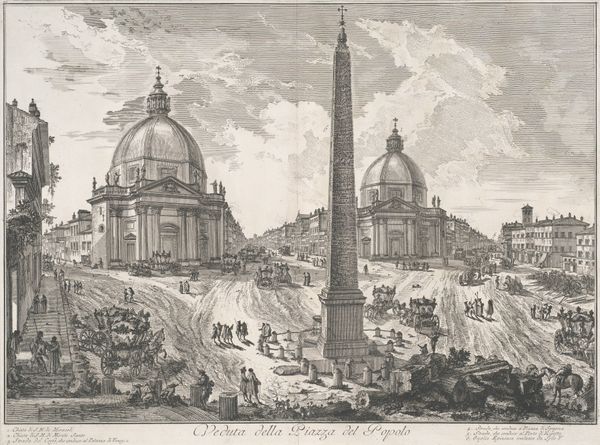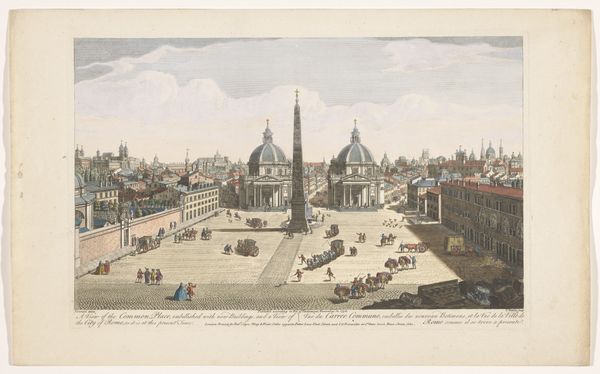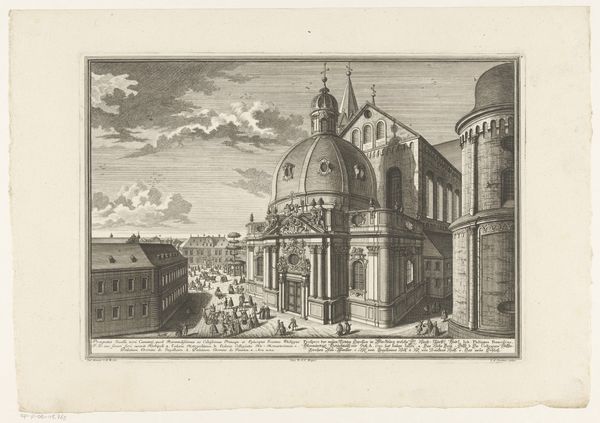
Dimensions: 17 x 27 in. (43.18 x 68.58 cm) (plate)
Copyright: Public Domain
Curator: This etching, "Veduta delle due Chiese," by Giovanni Battista Piranesi, completed in 1762, offers a stunning view in the Minneapolis Institute of Art collection. Editor: It's dramatic! The scale feels immense, even though it’s just an etching. The looming buildings almost oppress the figures in the foreground. Curator: Exactly! Piranesi's manipulation of perspective is key. He captures the Baroque grandeur, but also highlights the impact these structures have on public life, and how those spaces influence everyday activity. He’s presenting not just the aesthetic, but the political role of the architecture itself. Editor: And the use of light! Notice how he contrasts the detailed, almost claustrophobic foreground with the receding, light-filled spaces further down the street? The sharp contrasts could be interpreted to showcase disparities in class structures represented in the baroque area. It reminds me a lot of Foucault’s theories on panopticism and how architecture dictates its control in society through a feeling of surveillance. Curator: Piranesi was deeply involved in debates about Rome's urban planning. He sought to connect the city's classical past with its present, through prints sold to a primarily aristocratic tourist demographic that sought to obtain knowledge of and access to political structures represented by city life in Rome. These etchings served to reassert Rome’s cultural dominance during the Grand Tour, creating narratives deeply entrenched with cultural politics. Editor: The figures add so much! The working class, as well as religious figures almost function like props to fill space in the architecture in contrast to the columns of the empire; they act as mere specters in Piranesi’s depiction of architectural power and progress. It’s less about individuals and more about power and societal architecture that represents the Baroque period. Curator: Precisely. Piranesi wasn’t simply documenting Rome, but constructing an idea of Rome. And by focusing on the architecture as instruments of political will, he raises profound questions about the control and exercise of authority. Editor: Considering these grand architectures in the contexts of surveillance capitalism may present how these ideas perpetuate our current day. The gaze always present in both history, as well as future. Curator: Absolutely, Piranesi’s etchings push us to understand that artistic endeavors act not merely as aesthetically pleasing historical objects, but rather how they have consistently worked within complex systems to reflect upon, and even, shape our present society. Editor: It's striking how such old artwork continues speaking volumes about present-day themes on power dynamics, control, and identity.
Comments
No comments
Be the first to comment and join the conversation on the ultimate creative platform.
